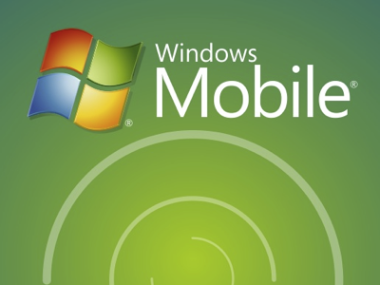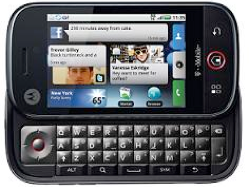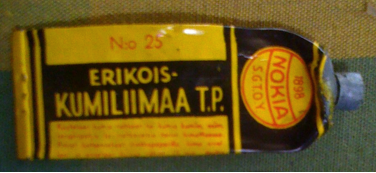Curious possibility:
More companies have promotional apps on the iPhone than permit their employees to use one. About 30% of the Fortune 200 already have iPhone apps.
Curious possibility:
More companies have promotional apps on the iPhone than permit their employees to use one. About 30% of the Fortune 200 already have iPhone apps.
 The decision process regarding mobility at Microsoft from 2005 has been a classic example of paralysis by analysis. Trapped by their processes and resources into doing horizontal solutions for a world that buys vertical integration, Microsoft was bound to fall into a trap. Like a wounded beast, it is not dying predictably but with spasms. Rather than concluding that Pink and Zune are part of a fucked up process or evolution, they should be seen as terminal convulsions of WinMo.
The decision process regarding mobility at Microsoft from 2005 has been a classic example of paralysis by analysis. Trapped by their processes and resources into doing horizontal solutions for a world that buys vertical integration, Microsoft was bound to fall into a trap. Like a wounded beast, it is not dying predictably but with spasms. Rather than concluding that Pink and Zune are part of a fucked up process or evolution, they should be seen as terminal convulsions of WinMo.
Credit to Dilger for going further than anyone in tying Pink, WinMo and Zune.
If I may summarize, the problems Microsoft faces are:
I won’t get into Microsoft’s dysfunctional culture as that’s been covered brilliantly by others.
 John Herrman reviews the new Windows Mobile 6.5 for Gizmodo:
John Herrman reviews the new Windows Mobile 6.5 for Gizmodo:
To put it another way, handset manufacturers have done more in the last two years to improve Windows Mobile than Microsoft has, which borders on pathetic. In the time since Windows Mobile 6.0 came out in February of 2007, Apple has released the iPhone — three times. Palm has created the Pre, with its totally new webOS. Android has come into being, and grown into something wonderful. RIM has created a touch phone and a revamped BlackBerry OS. For these companies, the world has changed.
And Microsoft? They eked out some performance enhancements and a new homescreen in 6.1, and executed a gaudy facelift for 6.5. This is what they’ve done to Windows Mobile.
The review from Gizmodo concludes:
I’d like to think that 6.5’s stunning failure to innovate is a symptom of a neglected project—maybe Microsoft just needed something, anything to hold people over until the mythical Windows Mobile 7 comes out, whatever it is. But as Steve Ballmer himself has plainly admitted, it’s worse: Microsoft has simply lumbered in the wrong direction for two years, letting everyone, save maybe Nokia, fly right past them.
John Gruber adds:
Microsoft’s irrelevance in today’s mobile space is nothing short of a spectacular failure. Worse than the mere fact that Windows Mobile 6.5 is a total turd is that no one is surprised, and no one cares.
I’ve said it before and I’ll say it again: Microsoft will take 4 to 6 years to respond to the iPhone. Nearly 3 years have already passed and indications are that Windows 7 will ship in devices by end of 2010. I expect another 2 years hence will be needed to polish it.
Nokia will take at least as long, though probably longer.
Neither response will be sufficient or effective. Curiously perhaps, throughout this time both Nokia and Microsoft will use each other as benchmarks of competitiveness.
 http://adage.com/digitalnext/article?article_id=139414
http://adage.com/digitalnext/article?article_id=139414
“Three Reasons Android Could Terminate Apple Despite the Hype, iPhone Isn’t the Only Mobile Platform in Town”
All three reasons he cites apply to the incumbents Windows Mobile, Symbian and Palm OS of old PalmSource. Android therefore is a symmetric response to the incumbents whereas iPhone is an asymmetric response. To suggest that Android has a chance to defeat iPhone implies that the incumbents do as well. If the incumbents do have a chance, why would they not destroy Android as they have vastly greater resources in a symmetric match-up? (Incumbents always win sustaining battles).
His argument depends on Google “being better”. History suggests that resource-based matches always benefit the incumbent.
 Earlier today, Motorola unveiled MOTOBLUR, a mobile social media OS of sorts that runs on top of Google Android. The company plans to introduce its first MOTOBLUR handset – CLIQ (and an international version called DEXT) – before the holidays
Earlier today, Motorola unveiled MOTOBLUR, a mobile social media OS of sorts that runs on top of Google Android. The company plans to introduce its first MOTOBLUR handset – CLIQ (and an international version called DEXT) – before the holidays
The assumption underlying this product is that “social networking” as it exists today is a job that people are specifically hiring devices to help them do. There are several problems with this assumption:
Therefore building a hardware product that is positioned and intertwined with SN is highly risky.
By the way, about 1.5 years ago Nokia considered doing the same thing. SN was on everyone’s mind as the next big thing, just like email was 2 years before that. These service fads come and go. It’s no surprise that one product development cycle later the devices are emerging even though the value of the service has rapidly evolved in new directions. This points out the fact that you can’t make hardware dev cycles match service/software dev cycles. The only way to play this from a hardware perspective is with a platform approach e.g. iPhone. Let the ecosystem solve the job to be done and collect rents. I’m always surprised that this lesson from the 90s is still being forgotten by the device guys. BTW, I understand the NOK Solutions logic a bit better. It is not a major departure from the track NOK is on now. The power base remains with devices, as it has for 15 years or more.
On another level, MOT is a going concern issue right now. The approach with CLIQ is, by definition, niche. I don’t see the product as broadly attractive solving MOT cash flow issues. If they sell more than 2 million units, I’d be surprised. (note: N97 got to 2 million on the back of massive distribution power but SE Xperia did not cross 1 million and Pre will struggle to get to 2 million.) The “bet” on Android is weak and not a bet really on anything correlated to earnings growth.
 So Dell is making Android mobile phones while Nokia is making Windows PCs. A curious confluence of poor management decisions.
So Dell is making Android mobile phones while Nokia is making Windows PCs. A curious confluence of poor management decisions.
Why is all this dilution of core competence happening? Average punditry would suggest it’s all about “convergence” and the overlapping of mobile and until-recently-fixed computing.
Er, not quite.
The economics of plastic bits shipped in cardboard boxes has not changed. It’s as lousy a business as it has always been, whether the plastic bits are small or large. Some would argue that the gross margins of mobile devices are higher than those of computers, but that’s not true on average. The gross margin on average mobile phones is just as low (<10%) as it is on PCs. There are about the same number of competitors and rivalry and global marketplace.
If indeed, margins were the only story, why would Nokia choose to chase the low margin PC business while holding (albeit very tentatively) 50% global share in “smartphones”? Similarly, why would RIMM choose to chase the low end consumer business (link: Blackberry Pearl et. al.) while having the fat margins of thinly penetrated business devices to wallow in? Finally, why would there be hundreds (literally link: www.pdadb.net) Windows Mobile smartphone licensees, the vast majority of which don’t manage to sell more than the 50k minimum volume licenses they are obliged to order?
The fact of the matter is that the money being chased by device vendors is not being paid for devices, but for the service plans those devices enable. More precisely, these businesses are concerned with capturing a share of ARPU uplift from mobile data services. As such, they are mostly offering hardware as enticements for the *change* in ARPU that mobile broadband creates. Success depends on the power of that hardware to compel users to switch to higher data service fees.
The first proponent in his “hardware as ARPU booster” was actually Microsoft back in 2003 when they entered the mobile OS market. One of their value propositions was that Windows Mobile would boost data ARPU. The reality was not so compelling however as WinMo turned out to be too awkward to use for most users and the power of the platform lay fallow. In reality, the first successful hardware ARPU booster was RIM. In the middle of this decade, RIM showed that a Blackberry user could be worth between $5000 and $8000 in NPV ARPU to an operator. For that juicy pie, RIM was handsomely rewarded with a small “cut” that boosted their margins to above 50% making them the most profitable device vendor on the planet.
The realization only began to set in about 2007 as every other vendor began applying resources to deliver ARPU boosters. Apple took note early and executed beautifully with the iPhone, mastering the “get paid for ARPU” game, and in the process capturing 50%+ gross margins and (depending on the quarter) up to 30% of all profits in the device industry.
To forecast how this game will be played and how sustainable this boosterism is, we need to segment or categorize the market according to ARPU. The way to visualize this is what I call the “wedding cake” model. Each cake layer represents the population of users in that ARPU segment and the thickness of that layer represents the delta of ARPU to the layer below.
At its highest, the cake is about $100/mo., though the width of the top layer and hence the population of paying customers at that price point is quite small relative to the other layers.
Now each layer is covered with a “frosting” which is the device hardware revenue. Obviously the frosting gets a bit thicker the higher the layer, but it’s a relatively thin layer compared to the “cake” thickness. In the higher layers the trend is in fact to make the frosting as thin as possible (<$99 NPV or <$4/mo. for a 24 mo. contract.) The devices which enable the top layers are clearly more complex and expensive to make, but the end-user pricing is trending down. The trick is therefore to convince the operators to pay a piece of the “cake” to the device vendor in exchange for migrating users to these higher layers.
Nokia’s latest quarterly results and forecast caused a 15% drop in the share price on a day when the S&P rose by about 1%. The drop was the largest single day change in the company’s valuation since 2004. The cause for the drop was not macroeconomics or performance in the previous quarter, but the guidance provided.
The shock was in an unchanged low margin and a flat market share. Both of these measures of performance were expected to improve as the overall market improved. What Nokia is saying, in effect, is that it will perform no better than the market average. Naturally, its value should therefore be no higher than the market average.
The trouble is that the “market” for mobile phones is abysmally free of value and hence of profits. Taking the sum of profits for all the major incumbents (Nokia, Samsung, LG, Sony Ericsson and Motorola) we find that net profits for the entire industry are, at best, flimsy, at worst, negligible. But this begs another question: why is value missing in mobile devices–a market that seems to be growing faster than almost any other technology market?
First a few facts:
So if one were to look at the incumbents, the ~1 billion phones they sell a year seem to be generating barely EUR2 per phone, most of it in the hands of Nokia.
The exceptions are, of course, the entrants RIM and Apple with EUR 60 and EUR 120 profits respectively per phone, orders of magnitude above average.
Nokia seems to be the best of a bad lot. Can Nokia expect to join the entrant cohort or sink with the incumbents? Answering this question forces us to go through a deep examination of what correlates with value in the new device market.

When the iPhone was announced in January 2007 I tried to envision the competitive response from Nokia. The method involved some knowledge of the product development cycle that I was faintly aware of.
Here is what I predicted:
I tried to revisit the prediction to update it with anecdotal evidence but so far there has been little activity that has affected the trajectory.